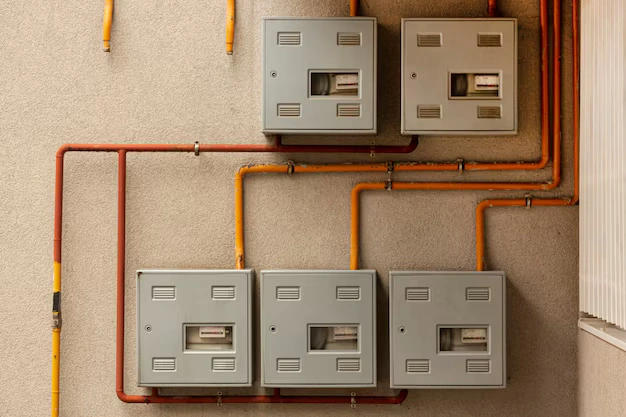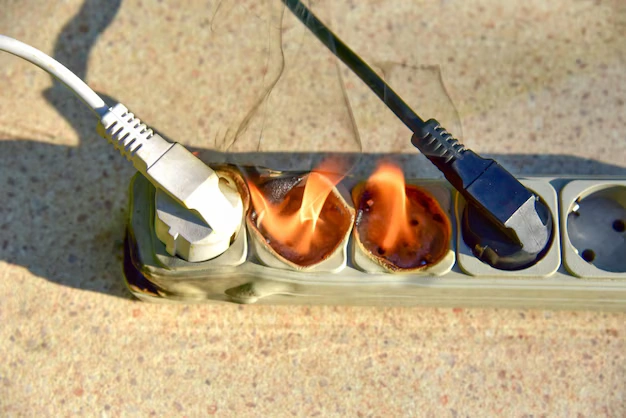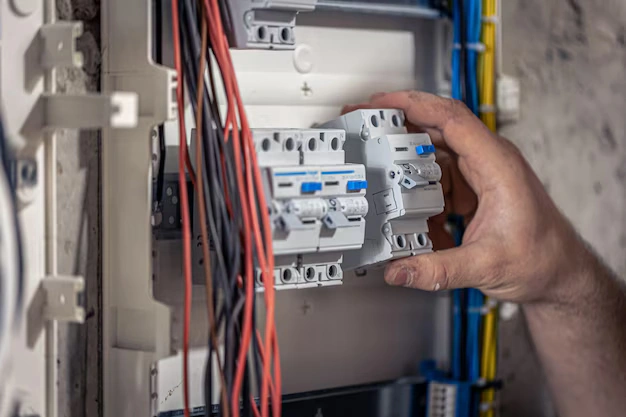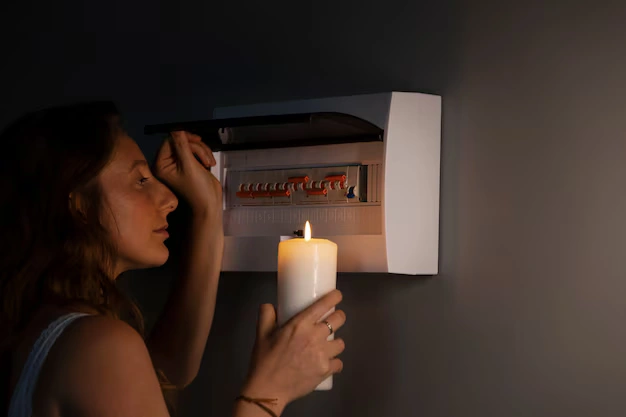Fire caused by electricity is a prominent concern in homes and offices. In fact, electrical fires are one of the leading causes of fires each year, totalling property loss as well as injury or death. Another lifesaving device is a Ground Fault Circuit Interrupter (GFCI), which prevents electrical fires by controlling excess electrical flow. These devices monitor the current in a circuit and help shield people from being electrocuted while preventing fires. In this blog post, we’ll be talking about GFCIs and the crucial role that they play in preventing electrical fires.
What Is a GFCI?
One consideration when wiring an outdoor circuit for almost any kind of electrical product is a Ground Fault Circuit Interrupter or GFCI. This can happen when electricity takes an unwanted route, like running through the water or across a human body. GFCIs are typically found in wet areas, including bathrooms, kitchens, and outdoor outlets.

They’re available as electrical outlets like the GFCI on this checklist, circuit breakers, or portable devices. If properly installed and maintained, GFCIs can be a lifesaver, stopping electrical shock, electrocution, and fires.
How Do GFCIs Prevent Electrical Fires?
GFCIs help prevent electrical fires in three ways:
- Detecting Ground Faults: GFCIs are designed to detect ground faults, an unsafe condition where electrical current strays from its intended path. Ground faults commonly happen when wiring is corroded or when power tools or an outlet become wet. If this stray current is not quickly stopped, it can start electrical fires.
GFCIs work by sensing an imbalance in the flow of electricity, and they can disconnect power to the affected circuit in full instant to prevent more damage and reduce the likelihood of fire.
- Preventing Electric Shock: In addition to being fire prevention tools, GFCIs also help prevent electrical shock. If someone touches a live wire or a faulty appliance, the GFCI will sense the difference in current and will turn off the circuit. Without GFCIs, electrical shock accidents can cause serious burns, heart complications, or lead to death. Preventing electric shock means a much lower chance of sparking and starting a fire from broken equipment or faulty wiring.
- Moisture Protection: Moisture is one of the major causes of electrical fires. Water is a conductor of electricity, and electric devices or wires that touch water are several times more prone to causing a fire. Moisture-related electrical dangers are particularly common in parts of the house where there is much moisture, such as in kitchens, washrooms, cellars, or outdoor regions.
GFCIs are engineered to stop passing the electrical current when they sense a ground fault or moisture, which could greatly decrease the risk of electrical fire in damp locations. Adding GFCIs in these high-prevalence areas provides additional protection from potential electrical hazards.
- Monitoring Circuit Integrity: Power Transfer GFCIs constantly check the integrity of the circuit and monitor power transfer. The power will be immediately shut off by the GFCI to prevent any further damage or risk of a fire if there is a problem with the wiring or a problem in the connected device.
GFCIs help to make sure that power doesn’t keep flowing to malfunctioning circuits, eliminating the potential for overheating or sparking that could cause a fire.

Where Should GFCIs Be Installed?
GFCIs must be installed wherever electrical devices might contact water or moisture. Common locations include:
- Bathrooms: Water and electricity don’t mix, and bathrooms tend to be moist, which raises the risk of electrical shock and fire.
- Kitchens: With wet surfaces in kitchens and a plethora of electrical appliances, kitchens are a risky environment.
- Outdoor Areas: Since outdoor outlets are exposed to open air, they have the potential of being exposed to water, so you will need GFCIs in your safety.
- Basements and Crawl Spaces Because these areas are usually moisture and humidity prone, GFCIs are necessary here.
- Garages: From appliances to tools to potential water sources, garages are high-risk areas for electrical hazards.
GFCI Installation and Maintenance
In order for GFCIs to do their job, they must be properly installed. GFCIs or RCDs can be installed by a home handyman once they are qualified to work with basic electrical things, but it is always advised to have a licensed electrician complete such work, especially in regards to circuit breakers or wiring. If improper installation leads to an incorrectly functioning GFCI, your home could potentially be left open to electrical hazards.
The grounded faulty circuit interrupter should also be tested on a regular basis to make sure it is still functioning. To test your GFCI outlet, press the “test” button on the device; the power should trip. This “reset” button is supposed to turn the power back on. It’s prudent to test your G.F.C.I.s monthly and to replace them if they no longer respond correctly.
The Bottom Line: GFCIs Save Lives
As far as preventing electrical fires is concerned, having earthquake circuit interrupters (GFCIs) is essential. These appliances provide an important measure against electrical shock and fire in areas with high moisture or water exposure. GFCIs assist in preventing electrical accidents before they become a dangerous situation by detecting ground faults and breaking the electric power supply.

One of the simplest and most effective ways to increase the safety of your electrical system is to install GFCIs in vital locations of your home. GFCIs help make sure your electrical system is operating safely, whether that be in the bathroom, kitchen, garage, or outdoors. These devices require regular testing and maintenance so as to ensure they function correctly and still be safeguarding your home and family from electrical hazards.
The safety comes when you have the right GFCI in place so your electrical system works properly and keeps the most vulnerable members of your family safe from danger.
Frequently Asked Questions (FAQs)
What is a GFCI, and how does it work?
Within the home, GFCIs must be used anywhere water might interact with electricity, such as bathrooms, kitchens, basements, garages, and outdoor outlets.
How often should I test my GFCI?
For best practices, you should try and test your GFCIs at least once a month to verify they are operating properly. Push the “test” button and then the “reset” button to confirm that the outlet is working as it should.
Do-it-yourself installation of a GFCI outlet?
Install a GFCI outlet if you are familiar with electrical work. But it is best to have a licensed electrician come do it to be sure it is done the right way.
Do GFCIs stop all electrical fires?
These kinds of circuits are nailed to prevent the hazard in addition to the electrical fires within wet areas. But it is also important to follow other electrical safety practices, such as not overloading outlets and repairing faulty wiring.


